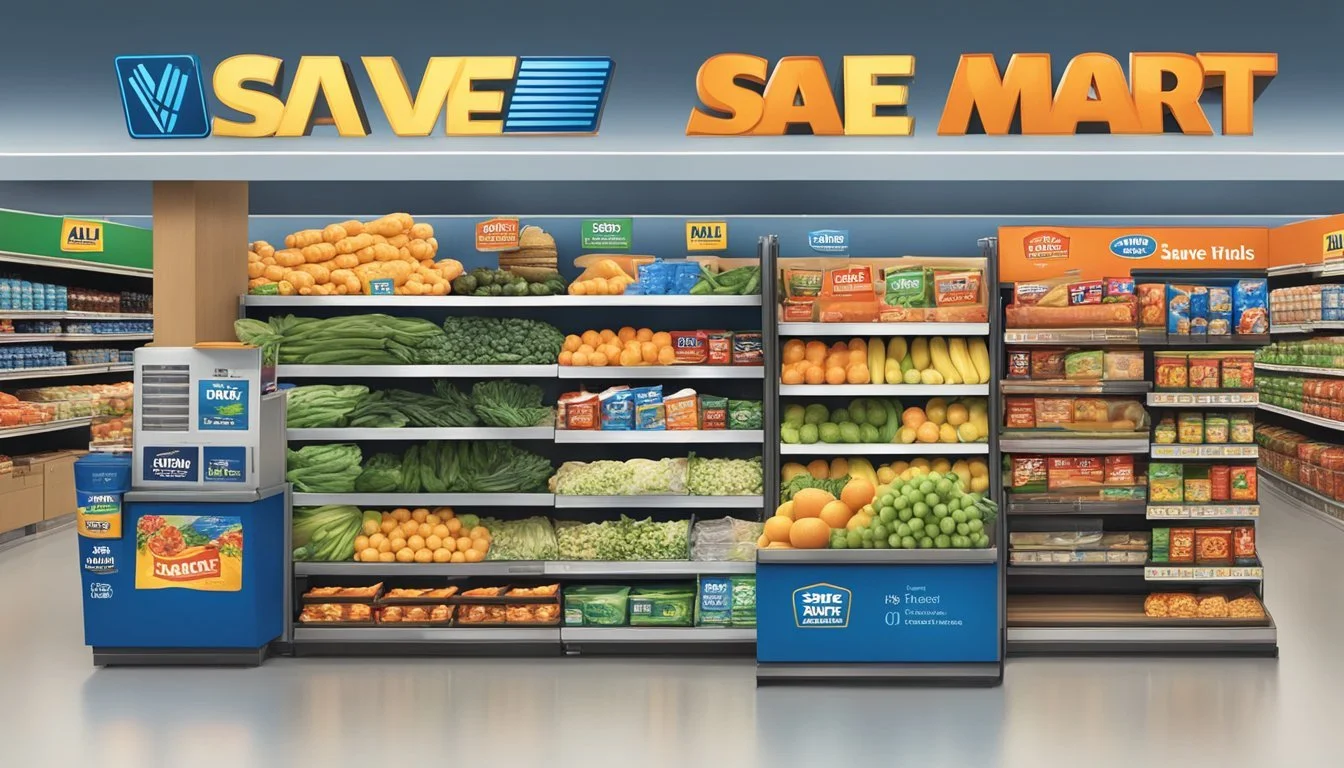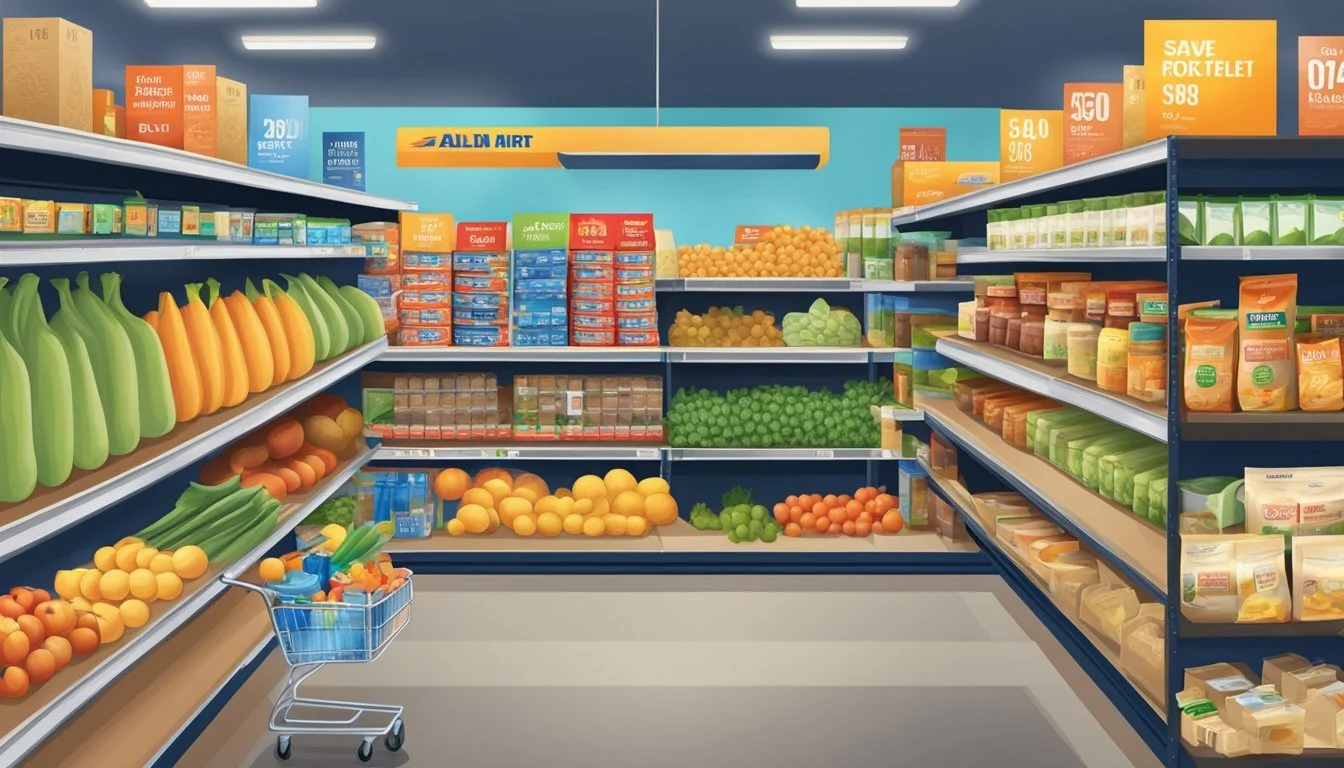Is Aldi Cheaper Than Save Mart?
Comparing Grocery Prices in 2024
Grocery shoppers looking to stretch their dollars often compare prices between different retailers. Aldi and Save Mart are two popular options for budget-conscious consumers seeking to reduce their grocery bills.
Aldi generally offers lower prices on many items compared to traditional supermarkets like Save Mart. The German-based discount chain achieves this through a no-frills approach, carrying mostly private label products and operating with a lean staffing model. This allows Aldi to pass savings on to customers.
Save Mart, a regional grocery chain, provides a more conventional shopping experience with a wider selection of national brands and services. While its prices may be higher on average, Save Mart often runs promotional deals and offers a loyalty program that can help offset costs for regular shoppers. Ultimately, the best choice depends on individual preferences, shopping habits, and specific product needs.
Comparing Grocery Store Profiles
Aldi and Save Mart represent different approaches to grocery retail. Each chain has its own unique history, store formats, and product offerings that shape the shopping experience for customers.
Aldi at a Glance
Aldi is a global discount supermarket chain known for its no-frills approach. Founded in Germany, Aldi has expanded across Europe and into the United States. The company operates over 2,000 stores in 36 states, including locations in New York and California.
Aldi's stores are typically smaller than traditional supermarkets, averaging 12,000 square feet. This compact format allows for efficient operations and lower overhead costs.
The retailer focuses primarily on private-label products, with over 90% of items being Aldi-exclusive brands. This strategy enables Aldi to offer lower prices compared to stores carrying more national brands.
Save Mart Overview
Save Mart is a regional grocery chain primarily serving California's Central Valley and Northern Nevada. The company operates about 200 stores under various banners, including Save Mart, Lucky, and FoodMaxx.
Save Mart stores are generally larger than Aldi locations, often ranging from 40,000 to 55,000 square feet. This extra space allows for a wider product selection, including more national brands and fresh departments.
The chain emphasizes fresh produce and local products, capitalizing on its proximity to California's agricultural regions. Save Mart also offers full-service departments like delis, bakeries, and pharmacies in many locations.
Unlike Aldi, Save Mart provides a more traditional supermarket experience with a mix of private-label and national brand products.
Price Analysis Overview
A comprehensive price comparison between Aldi and Save Mart reveals significant differences in their pricing strategies and potential savings for consumers. This analysis examines the methodology used for comparing prices and explores the factors influencing retail pricing decisions.
Methodology of Price Comparison
Price comparisons between Aldi and Save Mart focus on unit prices, calculating costs per ounce or pound for accurate results. The analysis includes a diverse range of products, from fresh produce to packaged goods. Researchers collect data from multiple store locations and online platforms to ensure a representative sample.
Seasonal variations and regional differences are taken into account. Price tracking over time helps identify trends and fluctuations. Special promotions and discounts are noted but not factored into the base comparison to maintain consistency.
Understanding Retail Pricing
Retail pricing strategies differ significantly between Aldi and Save Mart. Aldi's business model emphasizes low overhead costs and a limited selection of primarily private-label products. This approach allows for consistently lower prices across their inventory.
Save Mart, as a traditional supermarket, carries a wider variety of brands and products. Their pricing structure often includes higher markups to cover increased operational costs. However, Save Mart may offer more frequent sales and loyalty programs to attract customers.
Factors influencing pricing include supply chain efficiency, store location, and local competition. Aldi's streamlined operations often result in lower prices for staple items. Save Mart may have more competitive pricing on specific products or categories where they have stronger supplier relationships.
Cost Breakdown by Categories
Comparing prices between Aldi and Save Mart reveals significant differences across various product categories. A detailed analysis of key grocery sections provides insight into where shoppers can find the best deals.
Produce Prices
Aldi typically offers lower prices on fruits and vegetables compared to Save Mart. Seasonal produce often sees the biggest price gaps. For example, a 3-pound bag of apples may cost $2.99 at Aldi versus $3.99 at Save Mart.
Aldi's pre-packaged produce can lead to savings, but limits selection. Save Mart generally provides a wider variety of fresh options. Organic produce prices tend to be more competitive at Aldi, with items like organic bananas priced around $0.59 per pound compared to $0.79 at Save Mart.
Meat and Poultry Costs
Meat prices fluctuate regularly, but Aldi maintains an edge in this category. Chicken breast often sells for $1.99 per pound at Aldi, while Save Mart's price hovers around $2.49 per pound.
Ground beef shows a similar trend. Aldi's 80/20 ground beef typically costs $3.49 per pound, compared to $3.99 at Save Mart. However, Save Mart occasionally offers better deals on family packs and specialty cuts.
Aldi's limited selection means fewer premium options. Save Mart provides a broader range of choices, including organic and locally sourced meats.
Dairy and Eggs Analysis
Dairy products and eggs show some of the most significant price differences between the two stores. Aldi's milk prices are consistently lower, with a gallon of whole milk priced around $2.69 compared to $3.29 at Save Mart.
A dozen large eggs at Aldi costs approximately $1.79, while Save Mart charges $2.29. Cheese prices also favor Aldi, with an 8-ounce block of cheddar priced at $1.79 versus $2.49 at Save Mart.
Butter presents a similar pattern. Aldi's store brand sells for $2.99 per pound, while Save Mart's equivalent is priced at $3.49.
Pantry and Dry Goods
Aldi's pantry staples are generally cheaper than Save Mart's offerings. A 5-pound bag of all-purpose flour costs $1.89 at Aldi, compared to $2.49 at Save Mart. Rice shows a similar trend, with a 2-pound bag priced at $1.49 at Aldi versus $1.99 at Save Mart.
Canned goods like beans and tomatoes are also more affordable at Aldi. A 15-ounce can of black beans costs $0.59 at Aldi, while Save Mart charges $0.89.
Pasta prices favor Aldi as well, with a 16-ounce box selling for $0.99 compared to $1.29 at Save Mart.
Snacks and Beverages
Snack foods and beverages show mixed results, but Aldi generally maintains its price advantage. A 16-ounce bag of potato chips costs $1.79 at Aldi, while Save Mart charges $2.49 for a comparable product.
Beverage prices vary, but Aldi often comes out ahead. A 12-pack of soda sells for $3.49 at Aldi, compared to $4.99 at Save Mart. Coffee prices show a similar pattern, with a 12-ounce bag of ground coffee costing $3.99 at Aldi versus $4.99 at Save Mart.
Juice prices are more competitive, with both stores offering similar deals on popular brands. However, Aldi's store brand juices tend to be priced lower than Save Mart's equivalents.
Quality and Brand Comparisons
Aldi and Save Mart offer different approaches to product quality and brand selection. This impacts pricing, variety, and consumer preferences across key categories.
Store Brand Versus National Brands
Aldi focuses heavily on private label products, with over 90% of items being store brands. This allows Aldi to offer lower prices compared to stores with more national brands. Save Mart carries a mix of store and national brands, providing more familiar options but often at higher prices.
Aldi's store brands undergo rigorous quality testing to match or exceed national brand quality. Many Aldi private labels have won taste awards when compared to name-brand counterparts.
Save Mart's selection of national brands gives shoppers more recognizable options. However, this comes at a premium, as name brands typically cost 20-30% more than comparable store brands.
Organic and Non-Organic Offerings
Both stores provide organic options, but with different approaches. Aldi's Simply Nature line offers affordable organic products across various categories. Their organic produce selection has expanded significantly in recent years.
Save Mart tends to stock more national organic brands like Earthbound Farm and Horizon. This can result in higher prices for organic items compared to Aldi.
For non-organic products, Aldi maintains lower prices due to its private label focus. Save Mart's conventional produce and grocery items are often priced higher, especially for name brands.
Evaluating Product Freshness
Aldi's rapid inventory turnover helps ensure fresh products, particularly in produce and dairy. Their smaller store format allows for quicker restocking cycles.
Save Mart's larger stores may have slower turnover in some departments. However, they often have more extensive produce sections with a wider variety of fresh fruits and vegetables.
Both chains have quality control measures in place. Aldi's "Twice as Nice Guarantee" allows customers to return and replace unsatisfactory items, while Save Mart relies on traditional return policies.
Private Label Brands Analysis
Aldi's private label strategy centers on offering high-quality alternatives to national brands at lower prices. Their brands like Millville (cereal) and Friendly Farms (dairy) consistently receive positive consumer reviews.
Save Mart's private labels, such as Save Mart and Food Maxx brands, compete on price with national brands but have a smaller presence in stores. These store brands typically offer 15-20% savings compared to name brands.
Aldi invests heavily in product development and packaging design for its private labels. This results in products that often closely resemble national brand equivalents in appearance and quality.
Shopping Experience and Convenience
Aldi and Save Mart offer distinct shopping experiences, with each store prioritizing different aspects of convenience for consumers. Their approaches to store layout, checkout processes, and online options shape the overall grocery shopping journey.
In-Store Navigation
Aldi's stores are typically smaller and feature a straightforward layout. Products are displayed in their original shipping boxes, reducing restocking time and costs. This no-frills approach allows for quicker shopping trips but may limit product variety.
Save Mart stores are generally larger, offering a wider selection of items. Their layout often includes specialized departments like bakery, deli, and produce sections. While this provides more options, it can make shopping trips longer.
Aldi's streamlined design may be preferable for shoppers seeking efficiency, while Save Mart caters to those who enjoy a more traditional grocery store experience.
Checkout Efficiency
Aldi is known for its fast checkout process. Cashiers are trained to scan items quickly, and customers are expected to bag their own groceries at a separate counter. This system keeps lines moving swiftly.
Save Mart uses a more conventional checkout model. Cashiers often bag groceries for customers, which can be convenient but may lead to longer wait times during busy periods.
Both stores typically offer self-checkout options, giving shoppers additional flexibility.
Online Shopping and Pickup Options
Aldi has expanded its digital presence, offering online ordering and curbside pickup at select locations. Their app allows customers to browse products, create shopping lists, and schedule pickups.
Save Mart also provides online shopping and curbside pickup services. Their website and mobile app enable customers to order groceries for same-day pickup or delivery in many areas.
Both retailers have invested in these conveniences to meet growing consumer demand for flexible shopping options. However, availability may vary by location, so it's best to check with local stores for specific services.
Additional Financial Considerations
When comparing grocery prices between Aldi and Save Mart, several factors beyond base prices can impact overall costs. Smart shoppers consider deals, economic trends, and budgeting strategies to maximize savings.
Deals and Coupons
Aldi rarely offers traditional coupons but provides weekly "Aldi Finds" specials on select items. These can include significant discounts on seasonal products, household goods, and grocery staples. Save Mart, in contrast, accepts manufacturer coupons and offers digital coupons through their app. They also run weekly sales and promotions.
Save Mart's loyalty program provides additional savings opportunities for frequent shoppers. Members earn points on purchases, which can be redeemed for discounts on future shopping trips. Aldi does not have a loyalty program.
Smart shoppers can stack coupons with sales at Save Mart for maximum savings. This strategy isn't possible at Aldi due to their no-coupon policy.
Impact of Inflation
Inflation affects grocery prices at both Aldi and Save Mart. Aldi's streamlined operations and focus on private-label products may allow them to absorb some cost increases. Save Mart, with a broader selection of national brands, might see more direct price impacts.
Recent inflationary pressures have led to price increases across the board. Aldi's already low prices may provide a buffer against rising costs for budget-conscious shoppers. Save Mart's larger stores and wider selection come with higher overhead, potentially leading to steeper price hikes.
Shoppers should monitor price trends on their regular purchases at both stores to gauge the real impact of inflation on their grocery bills.
Budgeting for Groceries
Creating a grocery budget is crucial for managing costs, regardless of where you shop. Aldi's consistent low prices can make budgeting more straightforward. Shoppers can rely on relatively stable prices for staple items.
Save Mart's variable pricing and promotions require more attention to sales cycles. Savvy shoppers can plan meals around weekly deals to maximize savings. This approach may lead to lower costs but demands more time and effort.
Both stores offer online shopping options, which can help stick to a budget by avoiding impulse purchases. Aldi's smaller stores may also reduce the temptation to overspend on non-essential items.
Tracking expenses over time can reveal which store truly offers the best value for your specific shopping needs and habits.
Customer Perspectives
Shoppers' experiences and opinions play a crucial role in comparing Aldi and Save Mart. Their feedback provides valuable insights into pricing, quality, and overall satisfaction.
Reviews and Testimonials
Customers frequently praise Aldi for its low prices and high-quality store brands. Many report significant savings on their grocery bills compared to other stores, including Save Mart. Aldi's streamlined shopping experience, with its no-frills approach and efficient checkout process, receives positive mentions.
Save Mart customers appreciate the wider selection of products and brands available. Some prefer Save Mart's fresh produce section, citing better quality and variety. The store's customer service also garners compliments, with shoppers noting helpful staff and a more personalized experience.
Price-conscious consumers often highlight Aldi as the winner for everyday staples and pantry items. Save Mart, however, tends to score higher for specialty products and local offerings.
Loyalty and Repeat Business
Aldi's cost-effective pricing strategy has cultivated a dedicated customer base. Many shoppers make Aldi their primary grocery destination, supplementing with occasional trips to other stores for specific items.
Save Mart's loyalty program attracts repeat customers who value earning points and receiving personalized discounts. The store's community involvement and support of local products resonate with shoppers who prioritize these aspects.
Both stores have their loyal followers. Aldi's devotees appreciate the consistent savings, while Save Mart regulars value the familiar shopping environment and broader product range. The choice often comes down to individual preferences and priorities in the grocery shopping experience.
Retail Dynamics and Market Position
Retail competition drives pricing strategies as stores vie for market share. Grocery chains must balance maintaining low prices with quality to attract and retain customers.
Retail Competition and Pricing Strategies
Aldi, Save Mart, Walmart, and Kroger employ different tactics to compete in the grocery market. Aldi focuses on a no-frills approach, offering a limited selection of mostly private-label products at rock-bottom prices. This allows them to keep costs down and pass savings to customers.
Walmart leverages its massive scale to negotiate lower prices from suppliers. They often use groceries as loss leaders to drive traffic, making up margins on other departments.
Save Mart and Kroger fall between discount and traditional models. They offer wider selections and more national brands than Aldi, but aim to stay price-competitive with Walmart on key items.
Maintaining Low Prices and Quality
Keeping prices low while maintaining quality is a key challenge for grocers. Aldi achieves this through efficient operations, limited SKUs, and a focus on private labels. They rigorously test products to ensure quality meets or exceeds name brands.
Walmart relies on volume and supplier negotiations to offer low prices on national brands. They've also expanded their Great Value private label to provide budget options.
Save Mart and Kroger balance low prices and quality through a mix of strategies: • Private label offerings • Loyalty programs with personalized discounts • Optimized supply chains • Strategic promotions on key items
This allows them to remain competitive while offering a broader shopping experience than hard discounters like Aldi.
Conclusion
Aldi emerges as the more affordable option compared to Save Mart for grocery shopping. The discount retailer's focus on private label products and streamlined operations allows it to offer lower prices on many everyday items.
Shoppers can expect significant savings at Aldi, particularly on staples like bread, eggs, and dairy products. The retailer's limited selection and no-frills approach contribute to its cost advantages.
Save Mart, while generally pricier, may offer competitive deals on certain items through sales and promotions. It also provides a wider variety of brands and products compared to Aldi's curated selection.
For budget-conscious consumers, Aldi represents an attractive choice for routine grocery runs. However, Save Mart remains a viable option for specific needs or preferences not met by Aldi's inventory.
Ultimately, savvy shoppers can maximize their savings by strategically purchasing from both retailers. Comparing prices and planning purchases can lead to optimal savings on groceries.










